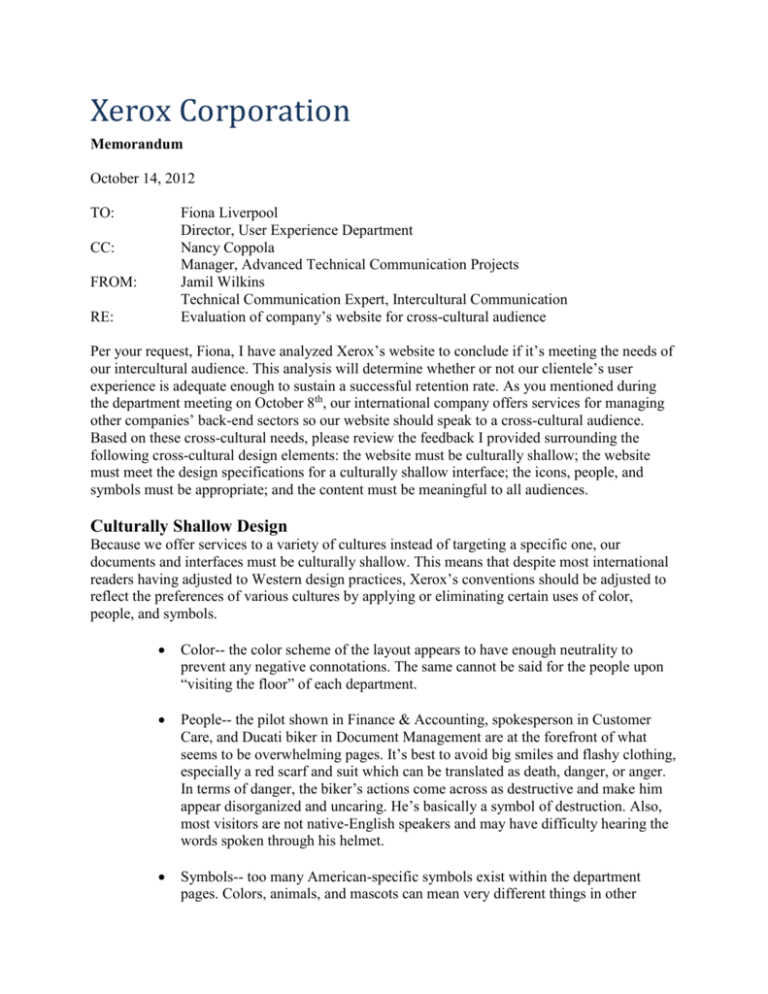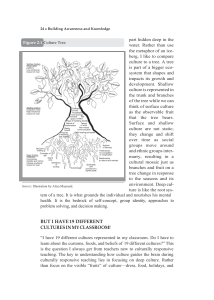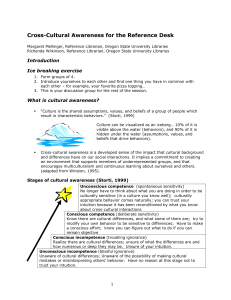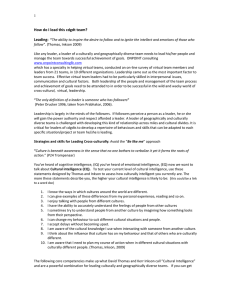Wilkins_WebAnalMemoRep
advertisement

Xerox Corporation Memorandum October 14, 2012 TO: Fiona Liverpool Director, User Experience Department Nancy Coppola Manager, Advanced Technical Communication Projects Jamil Wilkins Technical Communication Expert, Intercultural Communication Evaluation of company’s website for cross-cultural audience CC: FROM: RE: Per your request, Fiona, I have analyzed Xerox’s website to conclude if it’s meeting the needs of our intercultural audience. This analysis will determine whether or not our clientele’s user experience is adequate enough to sustain a successful retention rate. As you mentioned during the department meeting on October 8th, our international company offers services for managing other companies’ back-end sectors so our website should speak to a cross-cultural audience. Based on these cross-cultural needs, please review the feedback I provided surrounding the following cross-cultural design elements: the website must be culturally shallow; the website must meet the design specifications for a culturally shallow interface; the icons, people, and symbols must be appropriate; and the content must be meaningful to all audiences. Culturally Shallow Design Because we offer services to a variety of cultures instead of targeting a specific one, our documents and interfaces must be culturally shallow. This means that despite most international readers having adjusted to Western design practices, Xerox’s conventions should be adjusted to reflect the preferences of various cultures by applying or eliminating certain uses of color, people, and symbols. Color-- the color scheme of the layout appears to have enough neutrality to prevent any negative connotations. The same cannot be said for the people upon “visiting the floor” of each department. People-- the pilot shown in Finance & Accounting, spokesperson in Customer Care, and Ducati biker in Document Management are at the forefront of what seems to be overwhelming pages. It’s best to avoid big smiles and flashy clothing, especially a red scarf and suit which can be translated as death, danger, or anger. In terms of danger, the biker’s actions come across as destructive and make him appear disorganized and uncaring. He’s basically a symbol of destruction. Also, most visitors are not native-English speakers and may have difficulty hearing the words spoken through his helmet. Symbols-- too many American-specific symbols exist within the department pages. Colors, animals, and mascots can mean very different things in other cultures. For example, Document Management has a Mets baseball mascot sitting at a desk and succumbing to the pressures of the workplace while the Target Corporation’s Bullseye mascot barks in the corner beside Mr. Clean who’s wearing all white, a symbol of death in China and Japan. Another example is in some Islamic cultures dogs are considered “unclean.” The use of people should overall be reconsidered, but if they are used, I recommend not displaying them in all white. Additionally, the spokesperson of Customer Care speaks too quickly and uses too many hand gestures. For example, “OK” sign, open palm, and a pointing finger. Even the Michelin mascot throws up a thumbs-up symbol. These gestures are considered offensive in other cultures. Overall, the use of these colors, people, and symbols may not translate exactly across cultures and can lead to unintended consequences. Language and Content The language used within the site is also specific to the American culture. The information delivery is quick and to the point, giving the user the wrong idea. A person of an Arabic culture may get the impression that we don’t appreciate them or may be unwilling to take time to build common bonds among people. Someone from China may look at the site and expect more factbased items as opposed to an overview or customer reviews. The content may also seem unbalanced to cultures in the Middle East and Asia who read right to left. Overall, the organization of the information and documents must be altered to suit an international audience. Most of the symbols and graphics are what we would perceive to be logical or common sense--which is culturally bound--and will certainly translate as confusing or rude in some cultures, especially the “organized chaos” design that’s on every department page. Conclusion The website is not meeting the needs of our intercultural audience and must be altered to do so. I recommend a follow-up User Experience department meeting which would include the Information Technology department and Public Relations/Marketing division. The meeting will cover the details outlined in my analysis and address the actions needed for any necessary changes. A recommendation that I’m willing to provide is to embed a translator into the webpage which gives different cultures the opportunity to read the pages in their first language. To reinforce the translation, I recommend multiple versions of the website to accommodate various cultures. Additional recommendations can be discussed at the follow-up meeting. I look forward to receiving the invitation. Thank you, Fiona, for taking the time to review my analysis of the Xerox Corporation website. If you, or anyone else, have any questions or concerns, please feel free to reach out to me at ext. 1217, or e-mail me at jamil_wilkins@realbusiness.com.











